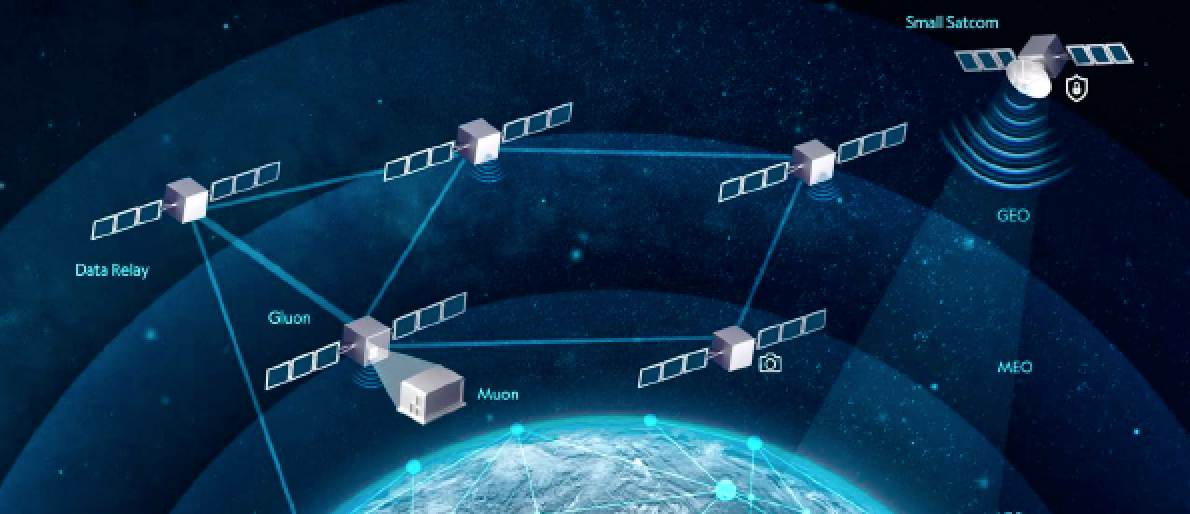On the ground, an army of servers, routers and gateways work for us tirelessly 24x7, exchanging data formatted in standardized, proven protocols, making it possible we can connect practically in real time with any part of our globe.

With more computing power in our hands than ever before — either installed in the cloud, sitting at the edge or at the palm of our hands — we are enjoying a new breadth of computing-intensive applications that are augmented by technologies such as statistical learning and artificial intelligence (AI).
Soon, humans will return to the Moon and from there we will gear up in the quest of exploring other planets. A question is already surfacing: how will we serve the communication needs required for such ambitious space exploration plans?
We need not look far away for the answer.
Earth orbiting satellites daily face bottlenecks and delays when delivering the data they have collected or distributed as they orbit above — satellites continue to heavily rely on rigid, point- to-point, legacy radio links to transmit what they have captured.
Moreover, space assets — unlike the networking equipment we have managed to install across the globe at sea level — require a huge amountl of attention and administration time from an army of highly qualified workers — workers who could be doing better things than checking battery voltages.
The gap between ground networks and space networks is tangible. At ReOrbit we are working to bridge this gap, once and for all.
People do not tend to spend time and energy thinking about the infrastructure that handles their data, just as they do not tend to spend time thinking about the piping that makes it possible for them to drink a glass of fresh water from the tap.
What is the actual point of thinking about servers, routers, and gateways handling our bits and bytes?
We care about the act of communicating with those we love, with our friends and with our colleagues. Networking equipment is “transparent” to us. And it must stay like that.

We pay for products that do a job or solve a problem. We, as customers, tend to zoom out from the details and focus on what makes our lives easier and better.
The real problems customers want to solve by using space technology (disaster relief, tracking assets, monitoring and surveillance, data relaying between distant regions, streaming high-quality entertainment) share a common need: data flowing from sources seamlessly and securely.
The act of ordering machines to communicate happens in a layered manner. When it comes to space technology and networking, we have mastered the technologies required to unlock the layers of the “onion” to obtain that data:
• We can design and build the satellites, and we have been accomplishing this for more than 60 years. We know flight software, we know on-board computers, avionics, systems engineering, sensors, actuators, and robust control laws.
• We happen to have studied a critical, natural resource: the electromagnetic spectrum. Bandwidth- efficient modulations and techniques, high-reliability components, low-noise amplifiers, antennas.
• We have devised a rich set of data protocols to deal with noisy channels. We have devised delay tolerant networking techniques, and laser comms protocols such as SDA tranche 1 to make dissimilar hardware talk to each other.
Combining all these developments, at ReOrbit we offer customers the opportunity to select the number of channels, data rates required and physical layers (radio frequency, laser), to choose the protocols, the encryptions, and tailor the on- board storage space.
Depending on the nature of the coverage needed, this could either be a LEO, MEO, GEO, or a Lunar orbit. For a variety of applications such as the Internet-of-Things (IoT), direct-to- cellphone comms, geolocation, voice, data, video; we abstract our designs from the final application because, for us, it is the bits that matter — and every bit that goes through a ReOrbit bus is a gold nugget in and of itself.
Our satellites are designed as telecommunications equipment floating in space, and it is because of this that availability (uptime) is a strong design driver.
Conceived as nodes in a network, our architecture incorporates great deals of autonomy: no one expects to supervise a network router every day or have large teams of people allocated to monitoring them.
This yields the floor for a powerful combo of autonomy, availability, and connectivity.
The payload-agnostic nature of the ReOrbit architecture leverages modularity in the face of an increasingly commoditized space hardware market.
Observing the Planet Is About Moving Data
Earth Observation (EO) and remote sensing satellites are also nodes in networks, whether operators want to accept that fact or not. EO satellites are data sources, as they carry sensors capable of transforming photons into a variety of frequencies and into an observable image that carries valuable information. Then, it is in the best interest of these operators to move the collected data fast, from origin to destination.
At ReOrbit, space missions are modeled as a composition of data sources that are coupled together to exchange the data in a secure manner.
Finally, realtimeness: data needs to be available in the correct hands at the correct point in time; meeting data delivery deadlines is a built-in feature of the company’s flight software design and architecture.
Data bottlenecks, jams and delays are problems we will soon leave behind. Data needs to keep moving to create value — the only way forward is to reliably network the data.
www.reorbit.space



